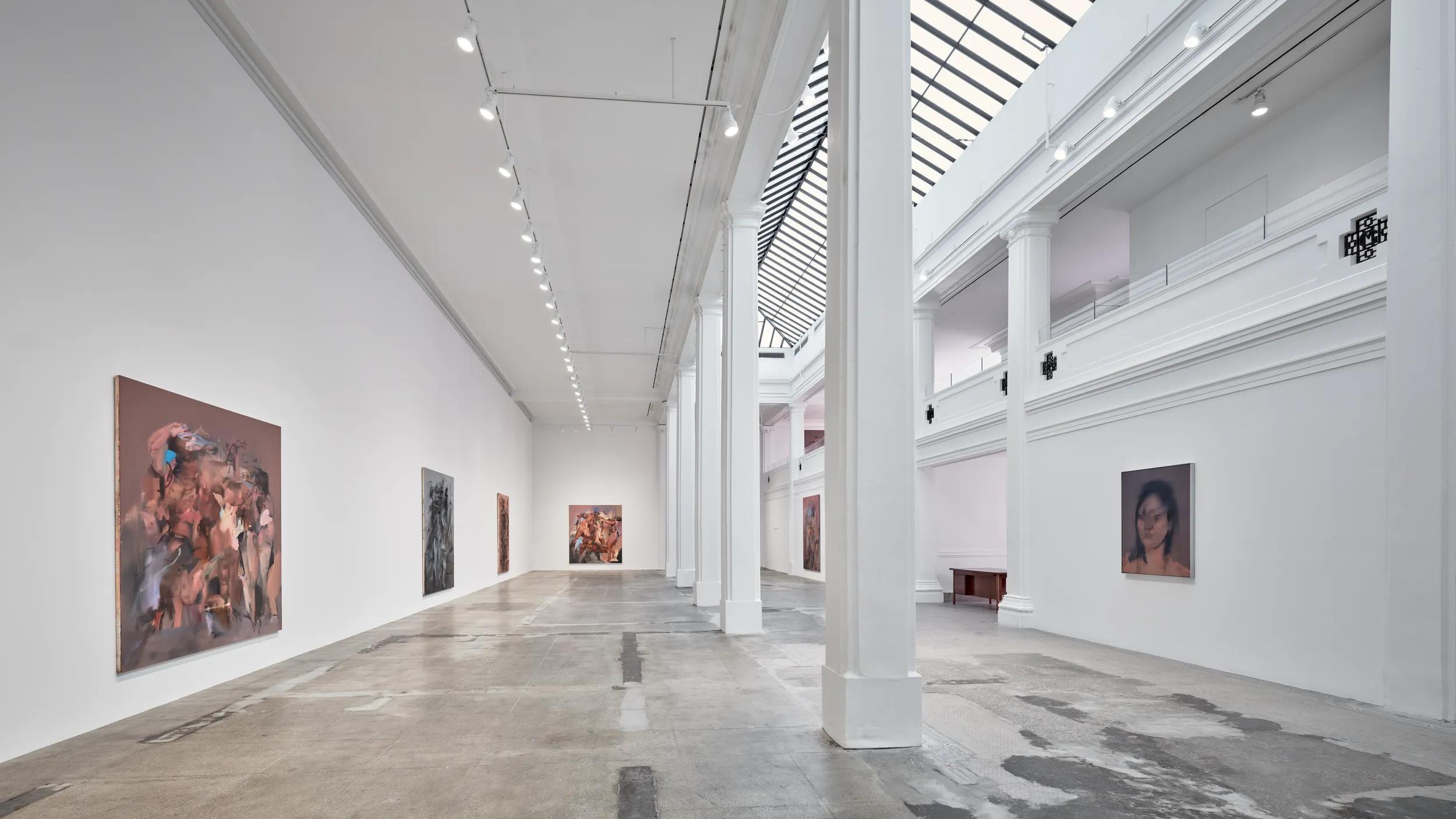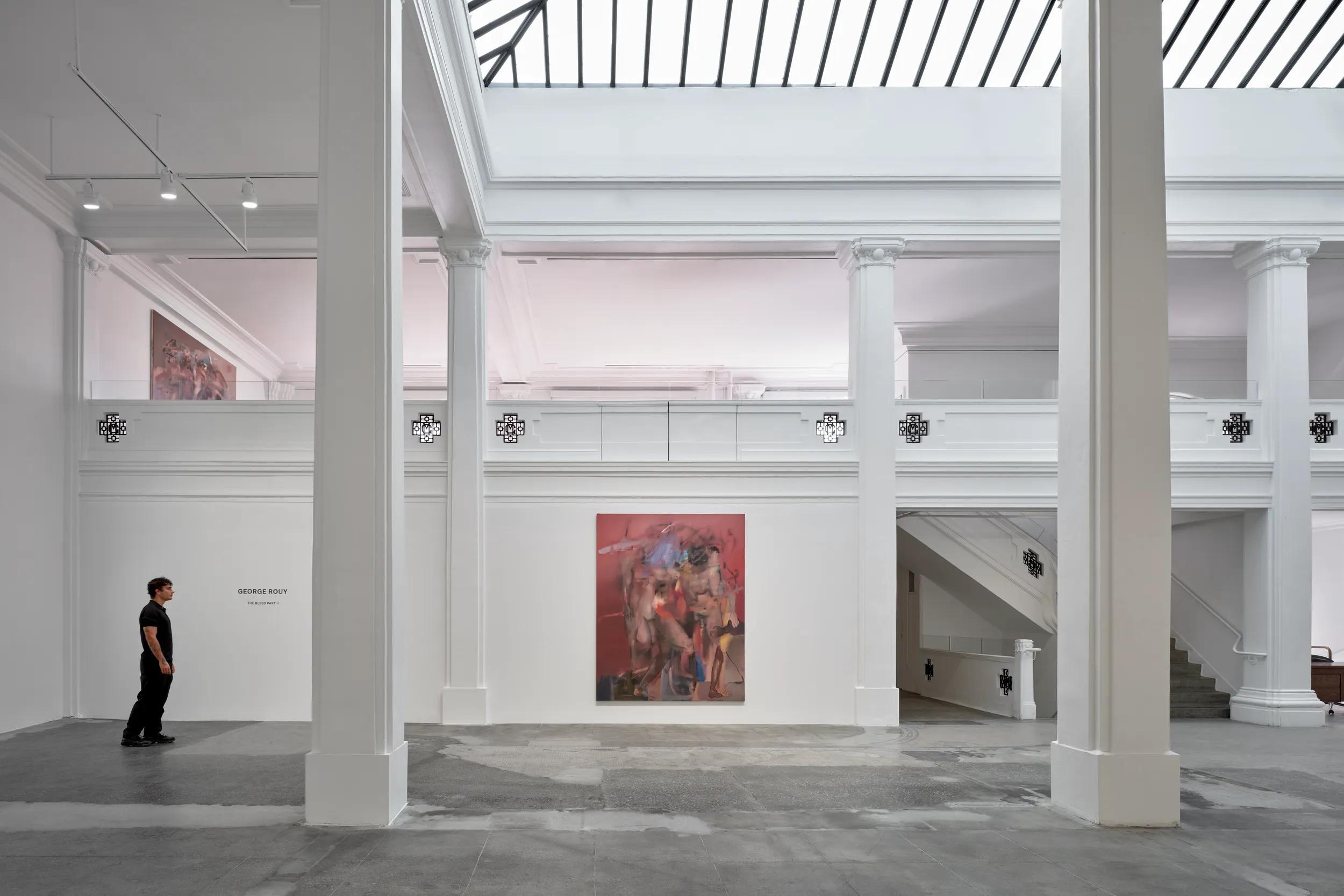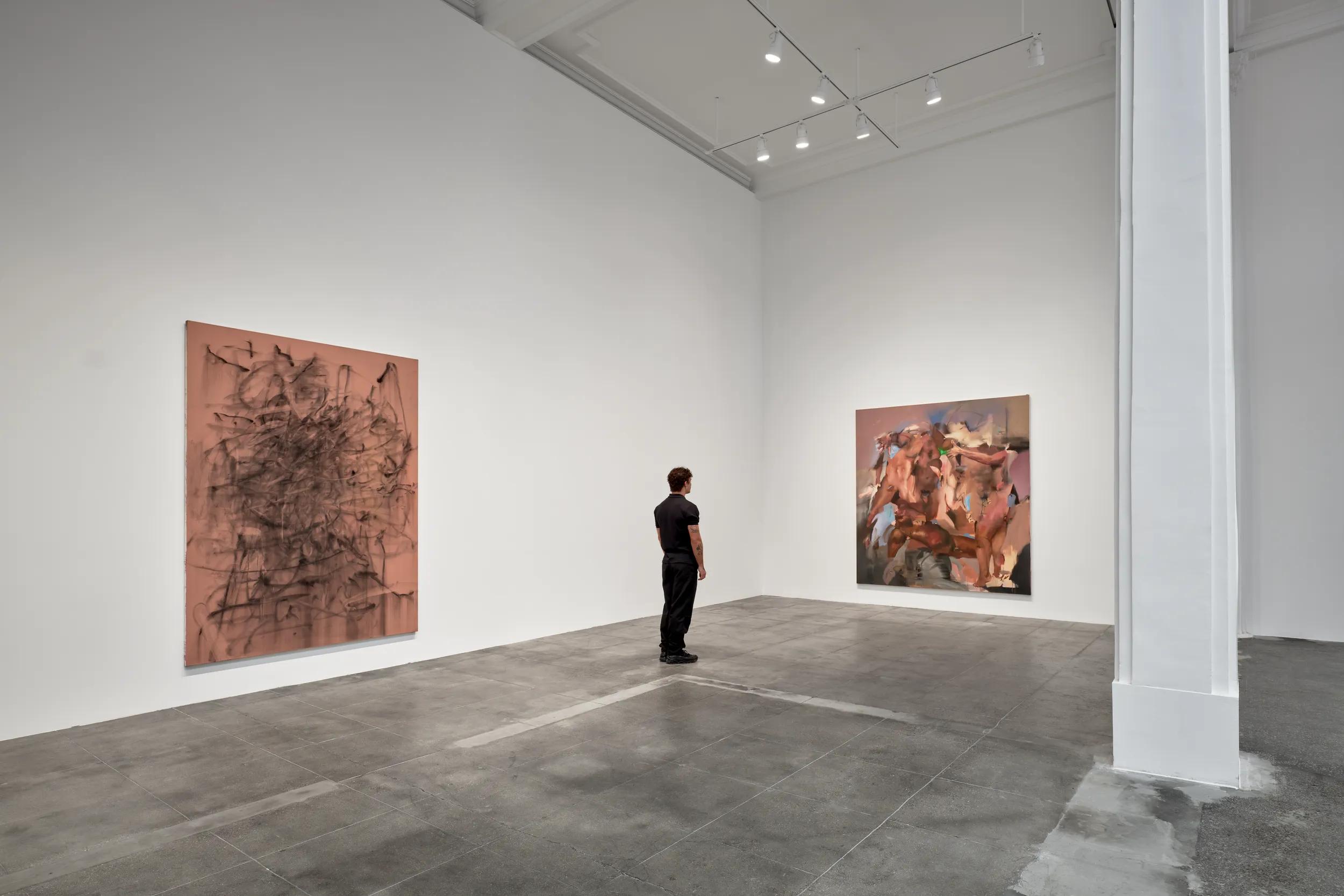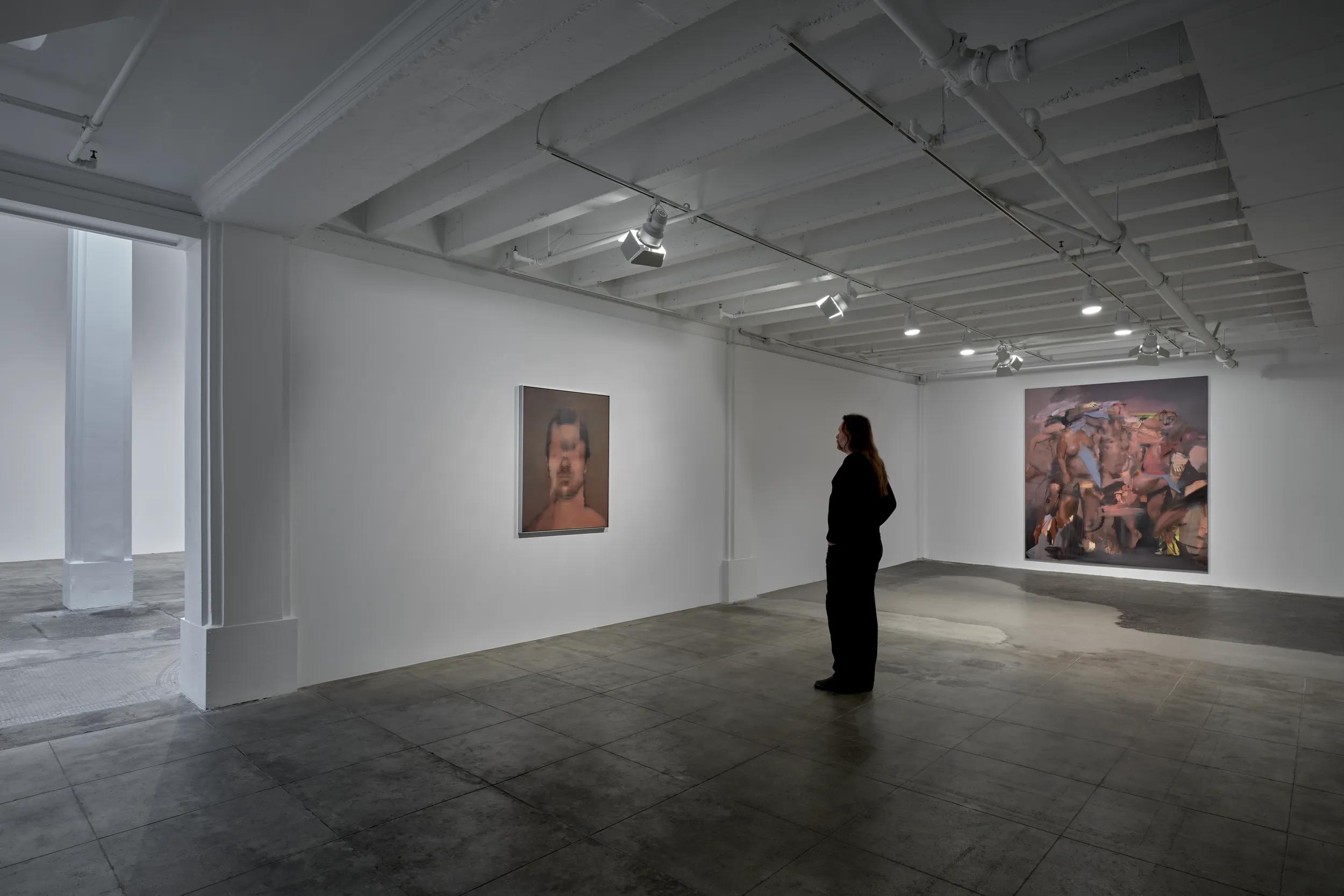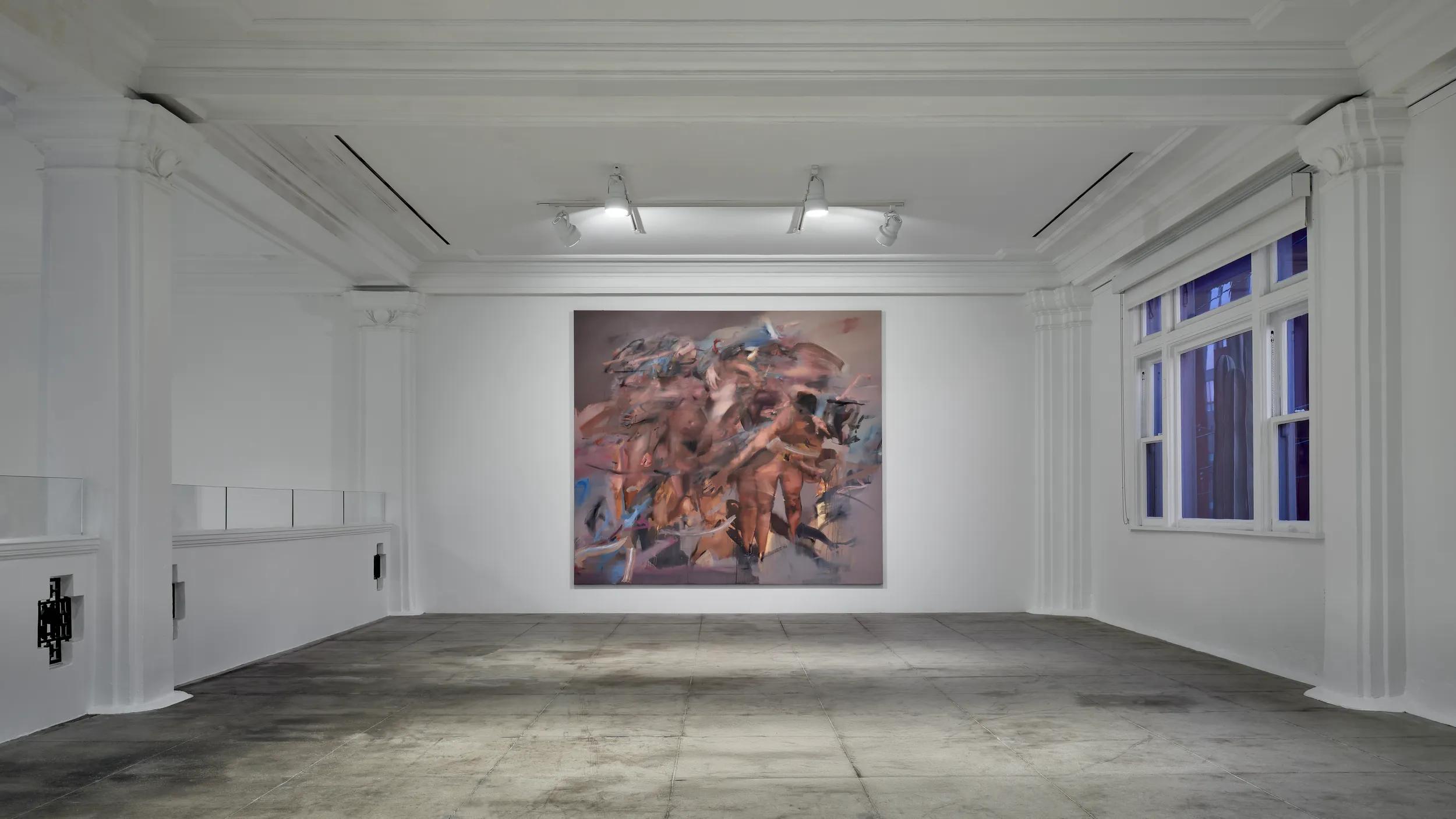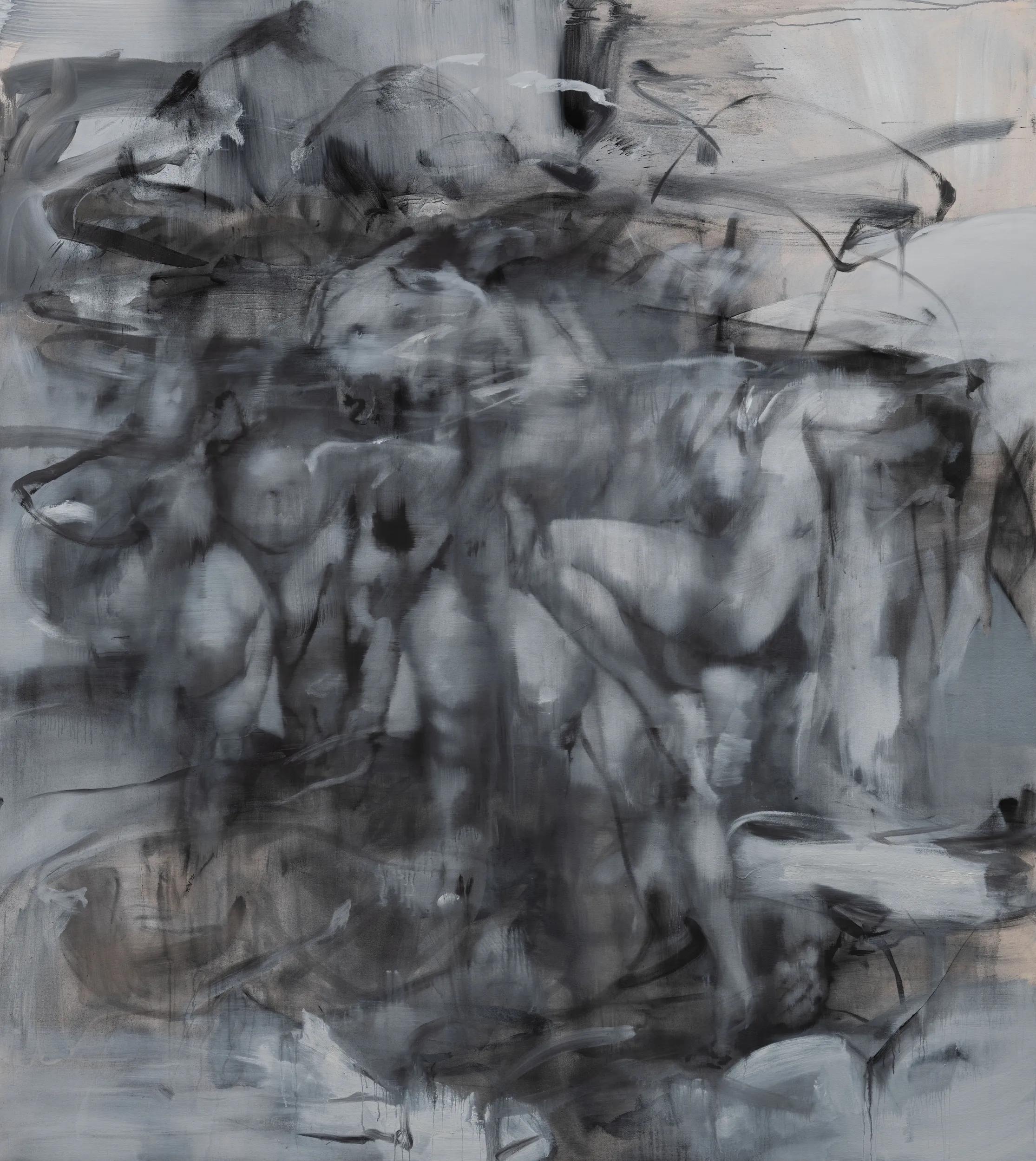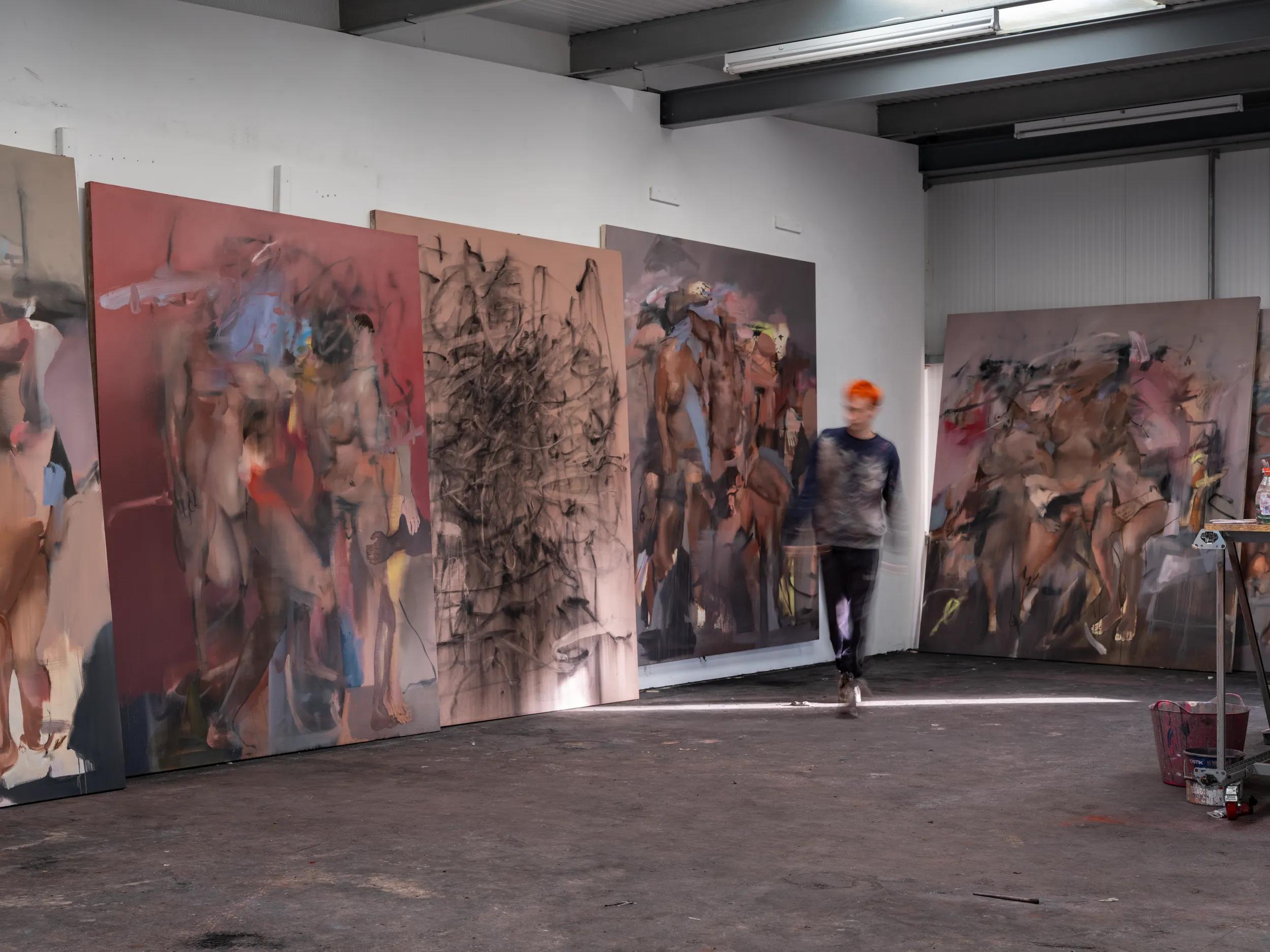
This February, Hauser & Wirth Downtown Los Angeles hosts ‘The Bleed, Part II,’ British artist George Rouy’s first US solo exhibition with the gallery. Following upon Rouy’s recent London presentation, this ‘second chapter’ will feature all new works extending his exploration of human mass, multiplicity and movement. In works characterized by a distinctive dynamism, Rouy captures essential experiences of contemporary life—desire and vexation, the urge to connect frustrated by alienation—to address emotional extremities in a globalized, technologically-driven age.
Explore the exhibition
The exhibition takes its title from Rouy’s concept of ‘the bleed,’ the ways in which figure and void manifest and interact on the surface of his paintings, resulting in a physical seeping, bleeding and merging. Rouy further extends the bleed to the related concept of ‘the surrounds,’ zones where flesh and bodily properties meet their surrounding conditions—from the intensive attributes of temperature, density and speed to extensive forms of mass, volume and entropy. Adhering to these concepts, the paintings on view reflect tensions between individuals and their environments in parallel with conflicts and harmonies among individuals or groups.
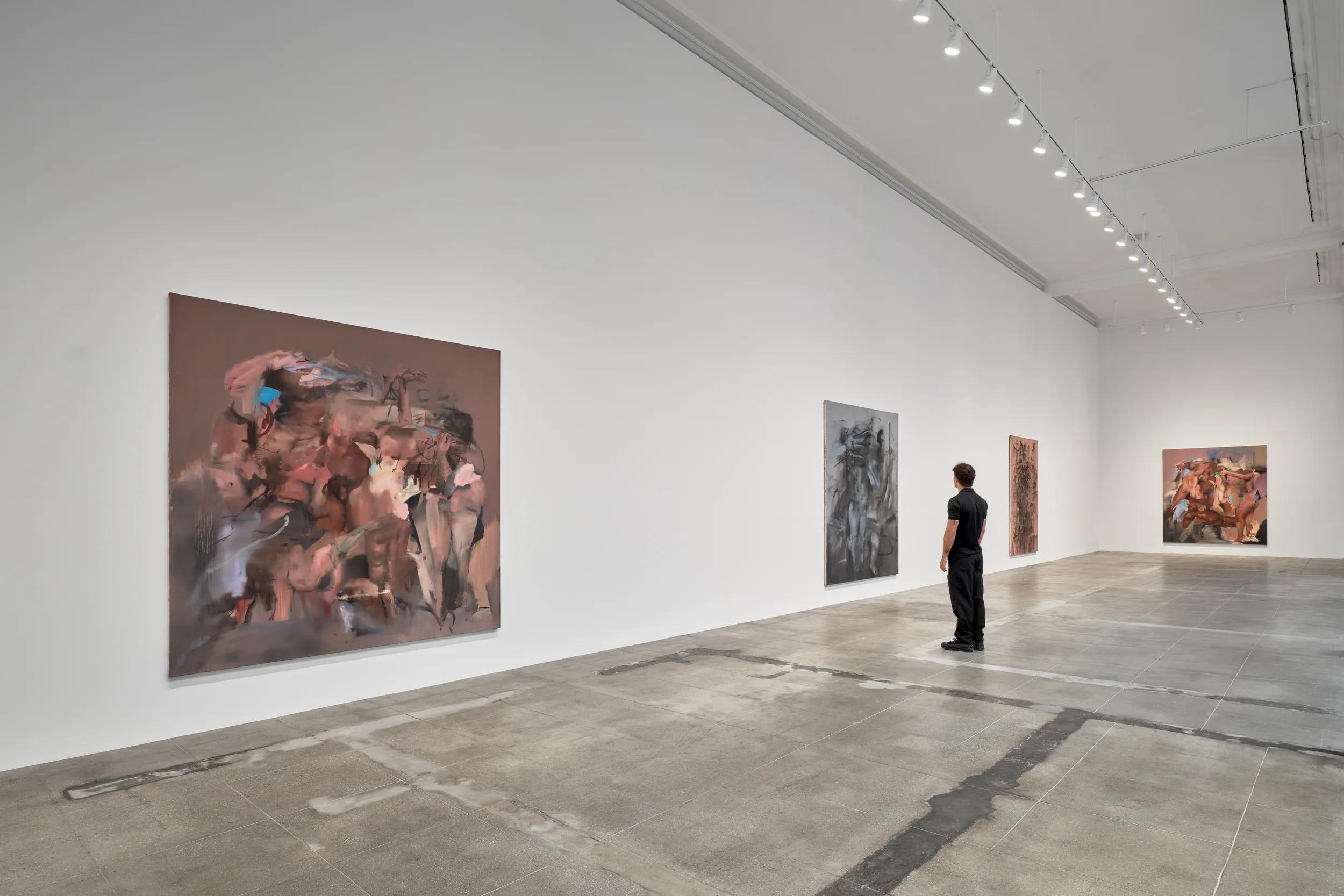
Rouy uses abstraction to disrupt familiar paths of interpretation, guiding the pace at which the viewer reads his paintings. Faces are enfolded, blurred or completely removed from the images, stripping it of its function as a powerful signal or signifier to focus on the body. Consequently, the hands of Rouy’s figures take on a significant role: they connect different parts of the painting’s surface and lead the viewer’s eye and mind through the composition. Possessing an uncanny familiarity, each painting’s composition, forms and energetic impact arise as much from the artist’s mind as from a phantasmagoria.

Rouy refers to his distinctively monochromatic works as ‘phantom paintings.’ Combinations of silver pigment and black charcoal allow the artist to explore extremes of light and dark, chiaroscuro effects that suggest moments in which previously hidden things are flickeringly illuminated and then erased from view. In ‘The Bleed, Part II’ Rouy introduces color to the graphite works, which appear as if weight, mass and feeling in the figure has been body mapped at great speed. The influence of photography and screen-based imagery is evident in all the works, conjuring through the visceral, physical medium of paint the fragmented, distorted reality of our digital age.

Life Mask
2025

Passing Absence
2025

Illustrating groups of figures in extreme physical and psychological states, Rouy’s art harkens back to such art historical milestones of narrative tragedy as Theodore Gericault’s ‘The Raft of Medusa’ (1818), depicting the survivors of a famous shipwreck, or ‘The 3 May 1808’ (1814) by Goya, which portrays the execution of Spanish rebels by French troops in Madrid, which is directly referenced in Rouy’s painting, ‘Absentee’ (2025).
Marshalling the contradictory forces of stasis and flow, precision and indeterminacy, Rouy uses human figures—and the oscillation of space between and around them—to reflect on issues of collective care and conflict, considering the question of how we tend to one another from birth until death and how our lives are shaped by the search for balance.

Rib Cage
2025

In Performance: ‘BODYSUIT’
Marking the opening week of the exhibition was the US premiere of ‘BODYSUIT,’ a visionary live work for five dancers by Rouy and internationally acclaimed choreographer Sharon Eyal. Their first collaborative creation, ‘BODYSUIT’ was a multi-disciplinary live event, with exacting, rigorous and liberated practices in movement, light, sound and environment. ‘BODYSUIT’ was commissioned by Hannah Barry Gallery and co-produced with Hauser & Wirth.
On Film: George Rouy
Ursula presents a ‘Breakages and Distortions,’ a conversation between Rouy and writer Ben Luke at the artist’s studio in Faversham, UK, to discuss the ideas behind his new body of work and the careful process that goes into creating his imagery.

On View in Downtown Los Angeles
‘George Rouy. The Bleed, Part II’ is on view through 1 June 2025. The gallery is open Tuesday – Saturday, 11 am – 6 pm.
All artworks © George Rouy. Courtesy the artist, Hannah Barry Gallery and Hauser & Wirth. Photo: Damian Griffiths
About the Artist

George Rouy
George Rouy is recognised as a leading figure in a new generation of international artists. His dynamic and signature use of the human figure, vexed with desire, freedom, alienation and crisis, speaks to the extremities of our time. Bodies - captured alone, gathered in quiet groups, or imprisoned in crowds of amorphous energy - move from absorption and poise to expansive forces of incitement and charge.
Together they present rhapsodic explorations of mass, movement and identity in a globalised and technologically driven 21st century, alluding to recurring themes of figure and phantom, landscape and anatomy, faces and masks. This bold and subversive corporeal language captures the grave beauty and perpetual transformation of our contemporary moment. Articulating a vocabulary of painting as distinctive as it is visceral, Rouy’s works are defined by contradictions: stasis and flow, precision and indeterminacy, chaos and harmony.
All his work is an ongoing inquiry into the body and the body as a landscape, an ongoing deconstruction of the image towards an expression of the human body in the throes of becoming, reconstruction and reformation. His painterly language embraces at once extreme figuration and pure abstraction to capture the perpetual transformations of the body in our contemporary moment. His work undermines the perception of the body as a fixed unit, proposing instead a body that he has described as “at war with itself”, that constantly imagines and defines itself through its relationship with itself, with others and with the world at large.
George Rouy (b. 1994, Sittingbourne, Kent, UK). Lives and works in Faversham, Kent. Since graduating from Camberwell College of Arts in 2016, he has exhibited internationally, including: Copistes, a collaborative exhibition between the Musée du Louvre and Centre Pompidou-Metz, Paris, France (2025); States of Being, Société, Berlin, Germany (2025); Visions of the World, Kampa Museum, Prague, Czech Republic (2025); The Bleed, Part II, Hauser & Wirth, Los Angeles CA (2025); The Bleed, Part I, Hauser & Wirth, London, UK (2024); Present Tense, Hauser & Wirth Somerset, UK (2024); The Echo of Picasso, Museo Picasso Málaga, Málaga, Spain (2023); Endless Song, Nicola Vassell Gallery, New York NY (2023); BODYSUIT, Hannah Barry Gallery, London, UK (2023); Belly Ache, Almine Rech, Paris, France (2022); Real Corporeal, Gladstone Gallery, New York NY (2022); A Thing for the Mind, Timothy Taylor Gallery, London, UK (2022); Shit Mirror, Peres Projects, Berlin, Germany (2022); Rested, Nicola Vassell, New York NY (2021); Clot, Hannah Barry Gallery, London, UK (2020) and Squeeze Hard Enough It Might Just Pop!, Hannah Barry Gallery, London, UK (2018).
His work is represented in the collections of San Francisco Museum of Modern Art (SFMoMA), San Francisco CA; Los Angeles County Museum of Art (LACMA), Los Angeles CA; Phoenix Art Museum, Phoenix AZ; Berkeley Museum of Art, Berkeley CA; Institute of Contemporary Arts, Miami FL; Fondation Cartier pour l'art contemporain, Paris, France; The ALBERTINA Museum, Vienna, Austria; Albertina Modern, Vienna, Austria; Stahl Collection, Norrkoping, Sweden; M Woods, Beijing, China; X Museum, Beijing, China; Sifang Art Museum, Nanjing, China.
His live creation, BODYSUIT, with choreographer Sharon Eyal and original music composed by Rouy, premiered at Hannah Barry Gallery, London in 2023. BODYSUIT was reimagined with new choreography and a new arrangement of the music for an expanded version of the piece in 2024, and the World Premiere took place at Wapping Power Station, London, UK and Hauser & Wirth, Los Angeles CA in 2025.
The first monograph of his work George Rouy Selected Works 2017-2023, with a text by Charlie Mills, was published by Tarmac Press in 2023.
Inquire About George Rouy Works
Current Exhibitions
1 / 12



